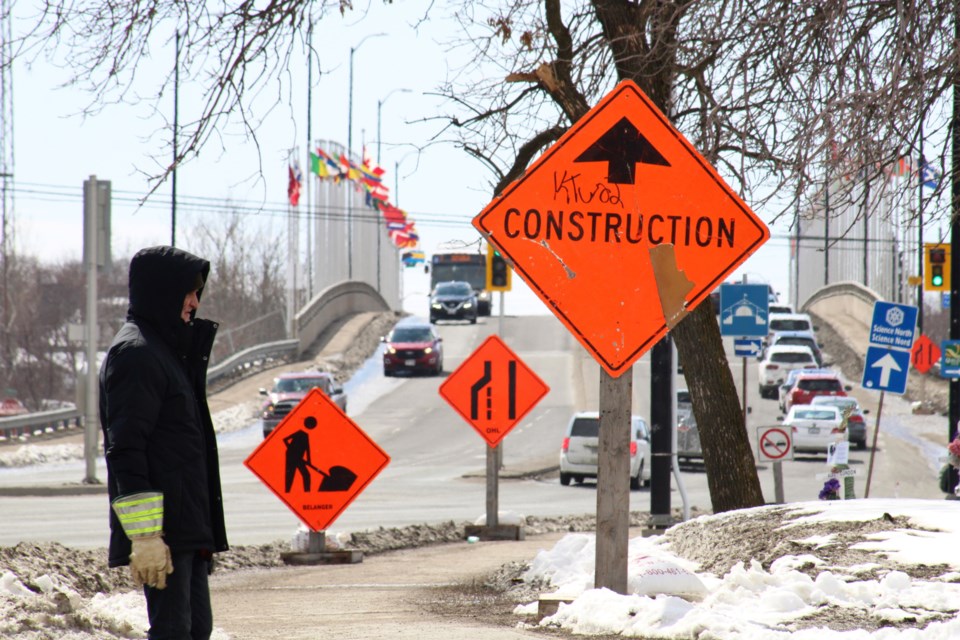Like clockwork, the annual municipal budget cycle has brought with it a public refrain of “taxes are too high.”
It might feel true on an individual level, but not when it comes to the city’s infrastructure challenges.
Looking at the city’s infrastructure gap in isolation, municipal taxes are far too low.
The city’s latest, full estimate, brings their annual infrastructure deficit to $130 million.
This, city manager Ed Archer explained to Sudbury.com, is above and beyond what is currently in the city’s annual capital budgets.
“If we could have an unlimited budget to address all of our infrastructure needs in one year, you would be raising current taxes by about 39 per cent,” Archer explained.
The city’s latest infrastructure gap estimate includes all municipal assets.
The city’s previous estimate, released earlier this year, recorded an annual shortfall of $103.3 million, at which time not all asset classes were included.
The latest $130-million estimate now includes the previously missing asset classes of facilities, water/wastewater and fleet.
Despite the city’s latest estimate, which is expected to be released as part of a broader report to city council next month, the city’s infrastructure spending deficit is nothing new.
During his public address last month highlighting city council’s first year on the job, Mayor Paul Lefebvre described the city’s growing infrastructure gap as “tough.”
“We are challenged, as a city, when it comes to our infrastructure,” he said at the time.
“Big city, low density; that’s the challenge that we have, so how do we address that and try to keep the tax rate as low as we can, provide good services, as well as having modern facilities?”
There’s no quick answer, he said, describing the situation as a “year-by-year” process with staff and city council trained on economic development to help pay for infrastructure renewal.
It’s been an issue slow-burning in the background for decades, with Archer noting that many of the city’s buildings were constructed using federal and provincial money several decades ago.
“They’re at a point in their life where they have got to be replaced, and those provincial and federal sources of money aren’t there like they used to be, so the municipal taxpayer is on the hook for them,” he said.
Perhaps the most noticeable symptom of the city’s infrastructure deficit has been Greater Sudbury roads, which are currently in an overall “fair” condition, but poised to slip to an overall “poor” condition by 2030 at their current funding level.
The city’s elected officials face a decision point where they’ll have to shrink their asset footprint (meaning fewer facilities), alter service levels or increase maintenance spending to keep them running, Archer said.
“It is a difficult conversation, but it is a conversation that ... council has demonstrated some willingness to have,” he said.
The city’s ongoing work to modernize emergency services infrastructure will see to it that the city’s current batch of 23 stations will be pared down to 17 (possibly 15, depending on what happens with the Skead and Beaver Lake stations).
Tom Davies Square is proposed to house a new central library to replace the aging facility on MacKenzie Street. As a result, various municipal services currently housed at Tom Davies Square will shift to another city-owned building to its immediate north.
Meanwhile, the city is also currently reviewing its collection of aquatics facilities and arenas.
Another option to tackle the city’s infrastructure deficit is debt financing, Archer said, noting the city still has a great deal of potential debt capacity, despite acquiring $303 million between 2020-22 toward such projects as the arena/events centre, Pioneer Manor bed redevelopment, Municipal Road 35 and the library/art gallery.
The city’s latest total estimated debt load at the start of the year, according to the 2023 budget document, was approximately $353 million, which requires annual repayments of $22 million per year, including principal and interest. Based on council’s self-imposed debt limit threshold, an additional $460 million could be borrowed. The provincial threshold is even greater.
“Your attitude of what the purpose of debt financing is and whether that’s a good or bad thing will influence that, but it’s a legitimate choice,” Archer said.
The city’s infrastructure deficit will be front and centre during upcoming 2024-25 budget deliberations, which are slated to begin after municipal administration tables their base budget for city council consideration on Nov. 15.
Included in the anticipated recommendations by city staff will be increasing the municipal tax levy by an additional 1.5 per cent toward infrastructure needs. The city’s elected officials voted against a similar such increase during 2023 budget deliberations. At the time, only four members of city council, including Ward 11 Coun. Bill Leduc, Ward 12 Coun. Joscelyne Landry-Altmann, Ward 5 Coun. Pauline Fortin and Ward 8 Coun. Al Sizer, voted in favour of that year’s 1.5 per cent tax levy increase toward infrastructure.
Tyler Clarke covers city hall and political affairs for Sudbury.com.
